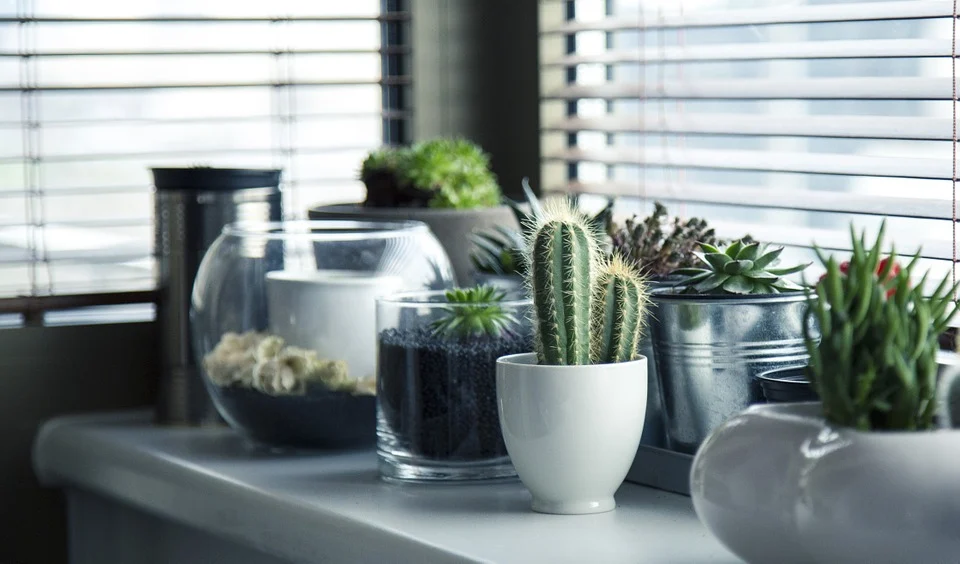Succulents can be a fun addition to any home, but they are not always care-free plants. They need special attention to look their best. When it comes to succulent plants, there are many things that you need to know. Succulents are not just easy to care for, but they are also beautiful and unique. If you want to grow succulent plants in your home, this article will offer you many useful tips that you can use for your benefit.
Here are four useful tips for caring for succulents indoors:
Suitable growth conditions indoors
First, ensure that the soil used for growing succulents has good drainage properties. The soil should be sandy in nature and well-draining so that it does not retain water and waterlogged conditions result in root rot.
Secondly, ensure that the temperature of the room where you plan to keep your succulents is between 16°C and 23°C. If it falls below this range, your plants may get sick because they cannot photosynthesize properly at lower temperatures.
Thirdly, ensure that there are no drafts in the room where you have planted your succulents, as drafts can damage their leaves by causing them to dry out too quickly.
Proper watering
Succulents are among the most straightforward types of houseplants to care for. They require very little water and can survive on just a few hours of sun per week. When watering succulents, you have two options: misting or regular watering.
The main difference is that misting requires much less water, but it also doesn’t allow you to check the soil and ensure it’s dry enough before watering again. Watering regularly allows you to check the soil more easily and keep it constantly moist in between waterings.
Succulents require low water levels to survive, so don’t overwater them! Water them only after ensuring the soil is completely dry.
Most succulents can tolerate about a 1/4 inch (0.6 cm) of water per week but check with the manufacturer’s instructions before watering any succulent plants. Succulents need good drainage, so make sure that your soil is well-draining. Don’t overwater your plants; allow the soil to dry out between watering sessions.
Expose them to adequate light: use indoor plant grow lights.
Many succulents are grown outdoors in full sun and can be quite happy in that situation. But if you have a corner of your home that gets no direct sun, or if your windows get a lot of shade at certain times, try growing succulents indoors under artificial light.
There are several ways to do this. You can place plants on a sunny windowsill or near an east-facing window where they will get some natural light. If you have artificial light available (either from a lamp or a grow light), you can use that instead. Or you can build an artificial sunlight box by placing four fluorescent lamps inside two 2’x2’x2′ boxes with reflective foil on top.
However, the best recommendation would be to use indoor grow lights like the popular QUX grow lights for succulents and grow light kits. Why? These lights use significantly less energy than typical incandescent bulbs and last longer, too, so they’re ideal, especially if you want to save money on electricity costs while maintaining a healthy environment for your plants.
The ideal indoor plant grow light will have a high intensity (usually measured in watts) and a color temperature between 5,000 and 7,000 Kelvin (K). using quality grow lights will ensure that your succulent is getting enough light to thrive.
Indoor plant grow lights are vital to ensure that your plants get the proper light. If you don’t have any or want to ensure your plants get the right amount of light, consider getting a grow light kit with everything you need to start growing succulents indoors.
Fertilizing
Succulents should not require fertilizer unless they’re in bloom or they’ve been repotting regularly. Fertilizer can cause flowers to drop prematurely if used too often or too heavily. For best results, use a balanced 10-10-10 fertilizer every two weeks until it runs out; switch to 12-12-12 after the new supply runs out again.
Use low-nitrogen fertilizer. Succulents aren’t known for their high-quality soil composition; they need a specific type of fertilizer that contains lower amounts of nitrogen than those used for other plants (such as tomatoes).
A good way to tell if this is necessary is by looking at the color of the leaves — if they start turning yellow or orange, it indicates that you are overfertilizing or using the wrong fertilizer. Ideally, it is essential to identify the best fertilizers for your plants to promote optimal growth.
Conclusion
Succulents are not hard to grow but require a little extra care. These plants have several advantages when it comes to indoor gardening. They are easy to grow, need minimal maintenance effort, and offer various colors and shapes. However, succulents can only thrive in certain conditions — so if you want your plant to flourish as expected, you’ll need to consider these few useful tips to ensure that it gets the best care possible. Good Luck!

